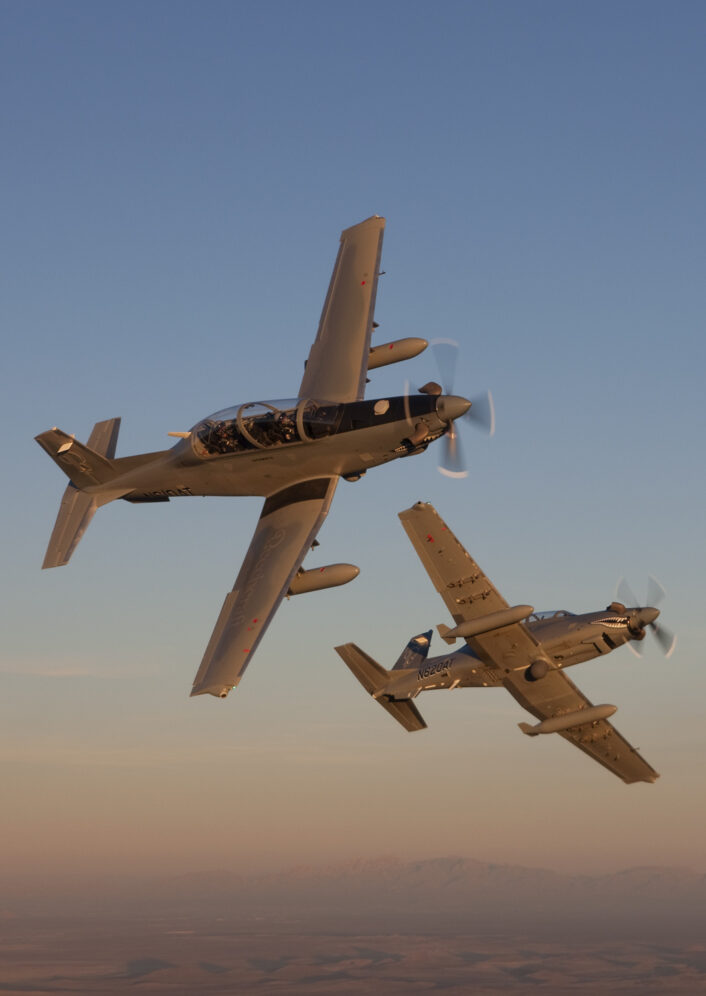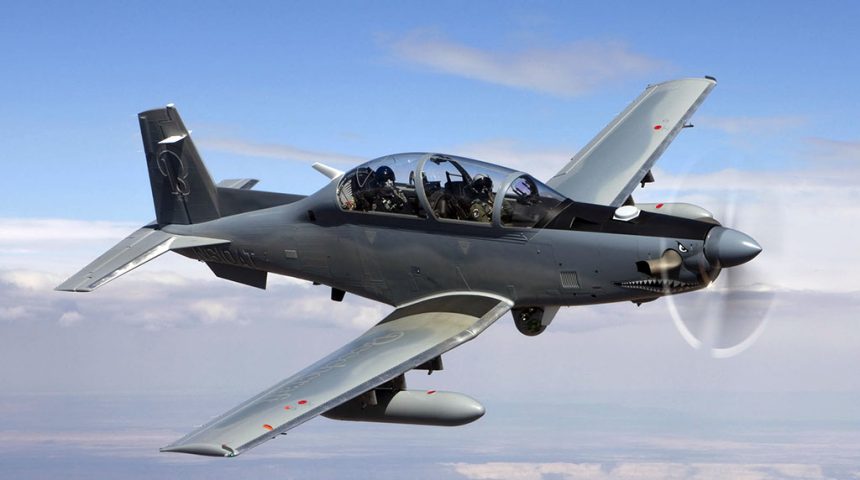RTAF awarded contract for 8 Beechcraft AT-6 aircraft, becoming first foreign customer for latest USAF light attack aircraft.
Textron Aviation Defense LLC announced on Nov. 14, 2021, a contract for eight Beechcraft AT-6 Wolverine aircraft, ground support equipment, spare parts, training and other equipment with the Royal Thai Air Force (RTAF). The $143 million contract will provide an Integrated System in support of the 41st Wing light attack operations at Chiang Mai Air Base.
As we reported last year, the conclusion of the Light Attack Experiment (LAE) resulted in orders for only a couple each of Sierra Nevada/Embraer’s A-29 Super Tucanos and Textron Aviation Defense’s Beechcraft AT-6 Wolverines. However, we noticed, “the USAF decision to be the launch customer of the AT-6E clears the path for foreign adoption of the platform through the Foreign Military Sales (FMS) program as well as via Direct Commercial Sales (DCS). In any case, the AT-6E’s successful completion of both Light Attack Experiment (LAE) Phases I & II — including a Forward Arming and Refueling Point (FARP) and austere field landing demonstrations – makes it a compelling addition to the export market.”
The contract signed today establishes Thailand as the international launch customer for the USAF’s latest light attack aircraft, the AT-6E.
The USAF previously adopted two AT-6E aircraft (the first received in February 2021) to support low cost communication and data sharing architecture among allies and partners through a program called the Airborne Extensible Relay Over the Horizon Network (AEROnet). The AT-6 continues under evaluation in the U.S. Special Operations Command (USSOCOM) “Armed Overwatch” initiative. The Royal Thai Air Force aircraft will be designated the Beechcraft AT-6TH.
“We are honored the Royal Thai Air Force has competitively selected the Beechcraft AT-6 to conduct a broad array of missions in support of its border security and its anti-smuggling, counter-narcotics and anti-human trafficking operations”, Textron Aviation Defense, LLC President and CEO Thomas Hammoor commented.

Here below, you can find an excerpt from an in-depth report written last year when The Aviationist flight tested the AT-6 and experienced its capabilities firsthand (report and video can be found at this link).
Per Textron Aviation Defense, the AT-6E is an adaptable, sustainable and affordable platform capable of operations in austere environments with close air support (CAS), armed intelligence, surveillance, and reconnaissance (ISR), strike coordination and reconnaissance (SCAR), forward air control (airborne) (FAC(A)) and insertion/extraction escort missions.
[…]
The AT-6E shares a high degree of commonality with the widely utilized T-6A Texan used by the USAF. Since 2001, aviators across the USAF, USN, USMC, USA and USCG have trained in the T-6. Nearly a dozen nations worldwide operate their own T-6 fleets and every year pilots from more than 40 countries graduate from T-6 training via the NATO Flight Training program in Canada, the Euro NATO Joint Jet Pilot Training Program (ENJJPT) at Sheppard AFB, and the U.S. Air Force’s Aviation Leadership Program at Columbus AFB.
Not to be mistaken, the PT6A-68D featured in the AT-6E offers a significant increase in power (1600 shp vs the 1100 shp of the T-6A), structural enhancements and defensive, sensor, communications and weapons capabilities — and more. Textron’s 1,000 T-6 variants have logged more than 3.3 million flight hours worldwide across different environments. With roughly 85% commonality between the two airframes, it’s not hard to see the value of the number of airframes in the market with support from Textron’s global service network. The time to transition from the T-6 to the AT-6E is short, facilitating mission-ready aviators very quickly.
The AT-6 proved its ability to utilize the Air Force-developed Airborne Extensible Relay Over-the-Horizon Network known as AEROnet during the Light Attack experiment. This air-to-air and air-to-ground radio system ensures interoperability, enabling militaries to share video, voice and chat communications and empowering them with command and control. None of this is particularly surprising given Textron’s expertise with ISR systems integration on platforms like the MC-12, Scorpion and others.









